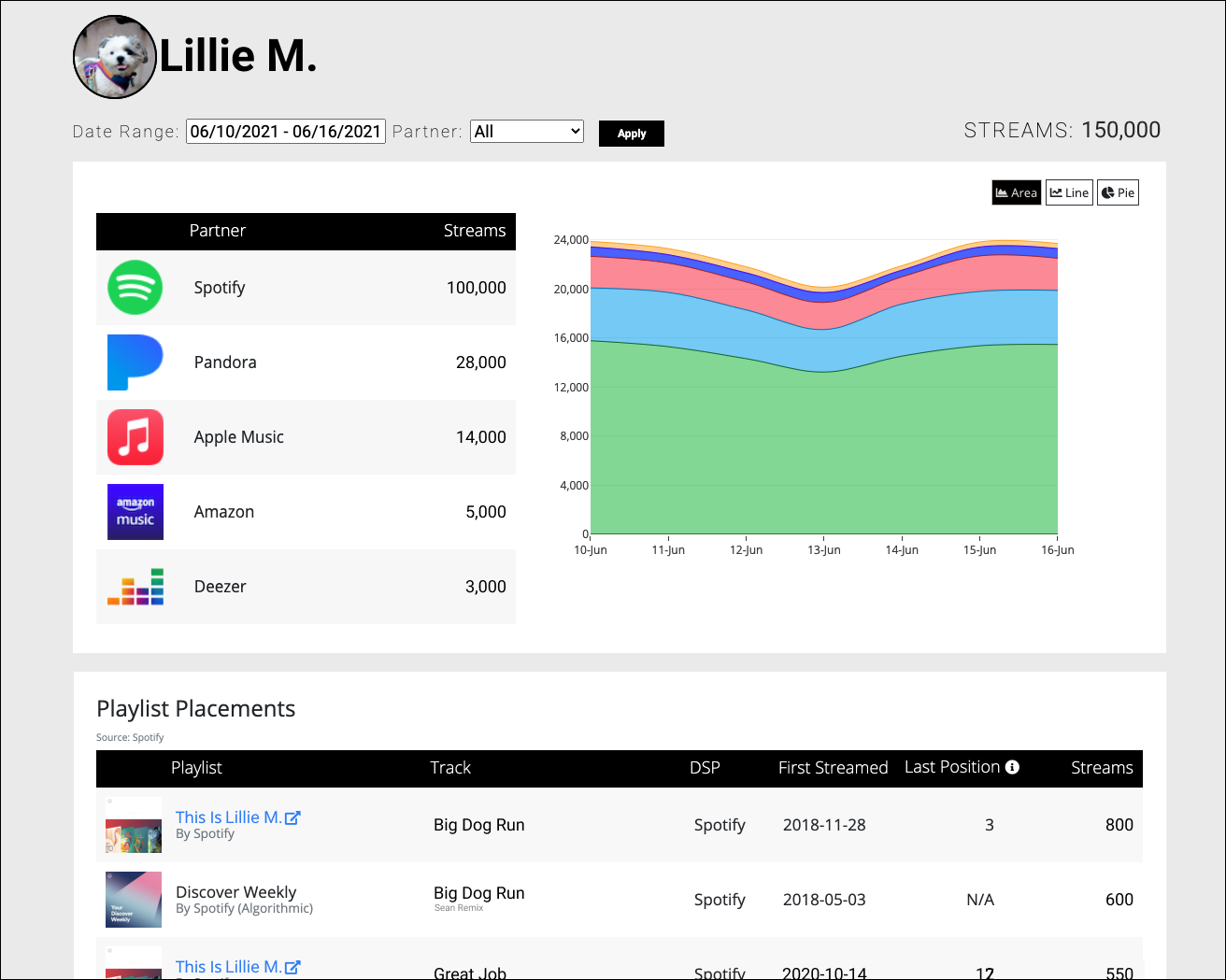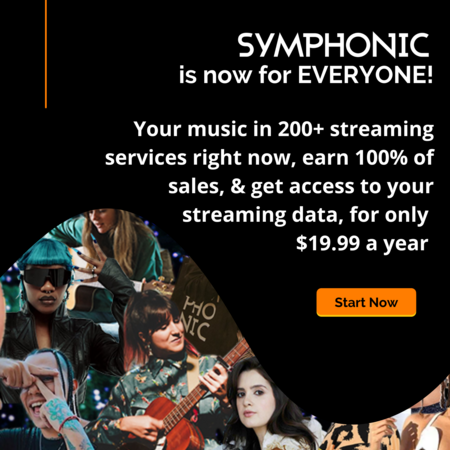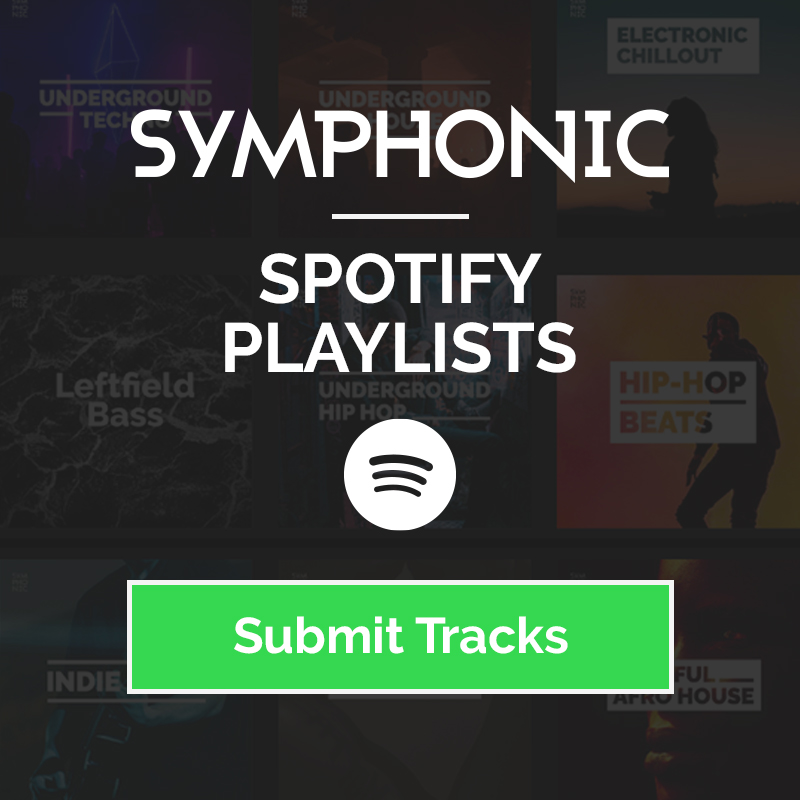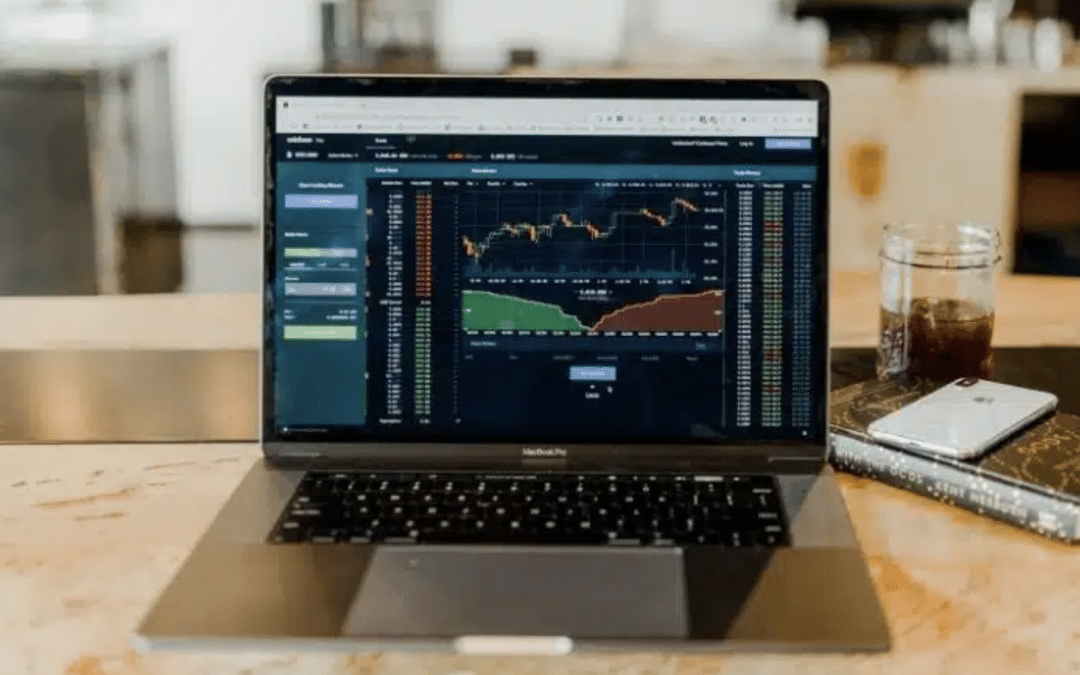
by Francesca | Mar 14, 2024 | Music Industry
Industry professionals and artists alike utilize music analytics tools to help them further understand their place in the market. Knowing where you stand and where you have room to grow is the key to excelling in this industry. To help you truly understand your stats, here are some of the best tools out there to guide you in the right direction…
Best Streaming Music Analytics Tools for Artists
SymphonicMS
If you’re a Symphonic Distribution client, you get access to some very helpful music analytics tools right in SymphonicMS that track key information from Spotify, Apple Music, Amazon Music, Deezer, Pandora, TikTok, YouTube and more. Under the Analytics menu, you can access pages that provide data like:
- Up-to-date streaming data from Spotify and Apple Music, with detailed breakdowns by artist, track, release, territory, and partners.
- Daily iTunes and Beatport download counts and overall download trends.
- Important Beatport statistics, such as subscriber counts and charting songs.
Navigate to this feature by clicking on Analytics ► Streams from the menu.
The landing page provides a catalog level view of performance across your entire catalog, broken down by several dimensions, such as Partner, Artist, and Territory. — You can also view breakdowns of an individual artist’s streams by clicking on them from the landing page. On the artist’s page, you’ll see breakdowns of their streams by several key dimensions, including partners, track, playlist placements, and many more!
All of these pages can be easily leveraged to help answer critical questions, such as how new releases are performing, where your audience is located, and which platforms your music is performing best on.
To access analytics for TikTok in the SMS, all you have to do is click on Analytics -> TikTok.
The landing page provides a catalog-level view of performance across the entire catalog on a given date range that you can change. Here, you can access details like engagement and Artist, Track, and Territory Analytics.
This tool makes it easier for creators to understand the TikTok metrics that really matter and helps maximize the impact of their future TikTok marketing campaigns. It delivers comprehensive and easy-to-read metrics on how many videos have been created using an artist’s music as well as how many views, likes, comments and shares the video generated. // To learn more about this, check out this article.
SoundCharts
SoundCharts offers social media data from six different platforms, playlist data from three different streaming platforms, and charts from seven different social and streaming platforms to give you actionable music streaming data, all in one place. Where’s this data coming from? Spotify, Apple, Shazam, YouTube, Deezer, Radio, SoundCloud, TikTok, Instagram, Facebook, Twitter, and Songkick, to say the least.
Spot On Track
Spot On Track is an analytics platform that lets you track stats from Spotify, Apple Music, Deezer, Shazam, TikTok and more. You can also see the current chart positions of your music, current playlists you’ve landed on, previous playlists, all your releases in each platform and more in an easy to navigate dashboard. Plus, it also offers radio play stats, retrieving all data directly from APIs. Although it’s pricey ($299/year), you can try it for free for 14 days first to see if you like it.
WARM
Get solid proof of your radio airplay to easily collect your royalties, discover where your fans are, and new emerging markets with WARM. With this platform, you can cover when and where your music is being played in real-time at the market’s most competitive price. By monitoring radio stations worldwide, WARM tracks your songs’ airplay in real-time in order to provide you with valuable insights that will help you take your music career to the next level. They also provide artists like you with the tools you need to improve your marketing and promotion strategies, and even accelerate your royalty collection.
Spotify for Artists
The best part about Spotify for Artists is their absolute count of artist’s streams, listeners, and saves. This analytics platform provides an easy-to-understand breakdown of playlist categories (algorithmic, editorial, and listener generated) and absolute counts for listeners and streams of an artist’s tracks on those playlists.
Detailed insights into streaming metrics like these are key for artists and their teams in this increasingly data-driven industry where Spotify reigns supreme.
Chartmetric
Chartmetric is an OG which gives you a bit of everything from every platform. With it, you get analytics and data from Spotify, Apple, Shazam, YouTube, Amazon, Deezer, Radio, SoundCloud, TikTok, Wikipedia, Instagram, Facebook, Twitter, Beatport, and more all in one place. Depending on if you utilize their Free or all-access Premium tier, you can get whatever you need depending on what’s most important to you. With Chartmetric, you can also do additional things like:
- Track current and historical playlist adds on Spotify, Apple Music, Deezer, Amazon Music, and YouTube.
- Understand who your audience is and where they are in the world with audience demographics.
- Global Digital Artist Ranking with Cross-Platform Performance (CPP), their proprietary global digital artist ranking that lets you measure artist performance across 16 streaming and social media platforms and metrics.
ForTunes
ForTunes is an easy-to-use mobile app for music data analytics on the go, drawing data from Spotify, YouTube, SoundCloud, Instagram, Facebook, and Twitter. It gives you basic streaming and social media tracking results, just like the other platforms we’ve mentioned in this post, but having it all at your fingertips with the mobile app is life changing for artists and teams on the go.
Apple Music for Artists
With Apple Music for Artists, artists can keep track of the volume of their streaming plays on Apple Music and album/song sales on iTunes, all within a data set that updates every day.
In addition, artists can:
- Gain insight into how specific songs/albums are performing.
- See how their fans are growing in international markets in over 100 countries.
- Find out which locations they’re the most popular.
- Plan future shows.
- Specifically tailor set-lists for fans in each location.
Viberate
Viberate offers streaming analytics, airplay and social media monitoring, professional charts and artist comparison, industry trends and audience demographics, smart talent discovery, and so much more. Even cooler, this platform has tutorials, webinars, guides, blog posts, and more to guide you through the platform and get the most out of your efforts.
YouTube for Artists
YouTube for Artists offers an easy to use dashboard in their YouTube Studio with real-time analytics to help you monitor your audience, global reach and performance across the entire YouTube ecosystem.
The Overview tab shows you a summary of how your channel and videos are performing. The key metrics card shows your views, watch time, subscribers, and estimated revenue (If you’re in the YouTube Partner Program).In this tab, you’ll also see reports for:
- Typical performance // A comparison to your latest video to your channel’s typical performance.
- Top videos // Your recent videos ranked by views.
- Realtime // Your performance over the last 48 hours or 60 minutes.
- Latest videos // Your performance from your 10 latest videos.
- Stories // Your performance over the last 7 days from your latest Stories.
Even deeper, YouTube for Artists gives you specific details on your content’s reach, engagement, audience, revenue, and more. — Learn more about these features and how to use them right here.
In Conclusion…
When it comes to developing your audience, it’s important to understand which aspects of your strategy are working for you and which parts are falling flat. Having access to data that shows you where your streams are coming from, which streaming platforms are performing the best, and even which social media apps are creating the most engagement are all things to pay close attention to.
With services like these, it’s no longer a guessing game. You have concrete data to back up your every move. Use it wisely!
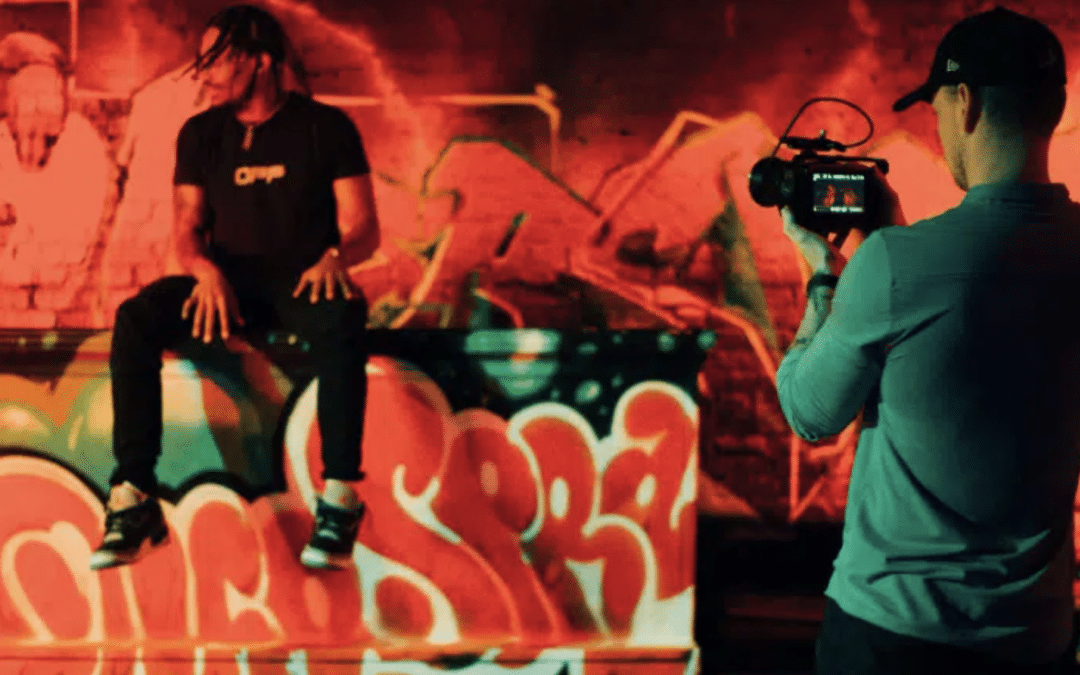
by Francesca | Mar 7, 2024 | Music Marketing
You’ve been prepping for this day for months, excited to finally drop that badass music video you’ve been pouring your heart and soul into. If you want it to perform the best it can, there are some things you can do on release day to improve your chances. In this post, we’ve got some tried and true tips to help you make release day a hit.
Music Video Release Strategy for Better Performance on YouTube
First things first… Channel Optimization
Before we dive in, don’t forget about the basics. When you upload a music video to your YouTube channel, making sure it’s fully optimized is key in setting it up for maximum discoverability. This means making sure your video’s Title and Description correspond, tagging and categorizing your video appropriately and utilizing an eye-catching, yet non-misleading, thumbnail. Once you put out the video, make sure to also set it as the featured video on your channel. That way, it’s easy to find for anyone who visits your channel.
In addition, YouTube has a huge focus on influencing users to do more than just consume the video and leave the platform. They also want them to participate, engage with, and create their own content. How can you do this? This is where the the Multi-Format Release Strategy comes in. If your own strategy follows this guideline, your video will perform better on the platform and be pushed further by YouTube’s algorithm. Here’s how it works…
What is a “Multi-Format Strategy”?
Exactly how it sounds, a Multi-Format Release Strategy is a content strategy that utilizes more than one type of format to promote a release. When it comes to YouTube, this is the best thing you can do to ensure your content is pushed to every corner of the platform, to as many fans as possible.
Although the main squeeze is the music video itself, your release strategy should also include features like YouTube Premieres, Shorts, and more. With YouTube’s billions of months users eager to consume new music, these are your best bet at catching (and keeping) their attention.
Release Day Premiere
YouTube Premieres lets you announce what time your new video will go live and show an announcement for your video in your audience’s feed before it does, giving them plenty of time to prepare to tune in. Once they do, you and your viewers can chat with each other just like a live stream. The more you engage with your fans during the Premiere, the more likely they are to engage with you and your new release even further. (For example… with the YouTube Shorts you create with the release. wink, wink)
How does it work? A public watch page is created for your video to eventually premiere on, then you can share the watch page URL since the watch page is public before the Premiere begins. Premieres show up across YouTube just like regular uploads, so you can find them through search, the homepage, and video recommendations. When it’s time to start your Premiere, remember to do these 5 steps:
- Enable chat replay
- Invite fans to ask questions or answer prompts
- Use moderators to find and reply to comments more quickly
- Engage with fan comments by liking, replying or pinning
- Thank viewers who showed up to support you and this release
Release Day Shorts
Speaking of Shorts… With these, you can create up to 60s of a snapshot to show fans the various sides of you and your art. You can show off your personality, interests, talents and creative flare, all using your new song. YouTube Shorts are also a great way to encourage fans to create their own additional content with your music. Not only does creating a Short with your new track to let your fans know its officially available, it gives them the opportunity to interact with you as an artist. When posting Shorts, consistency here will ensure all the attention is on your new song, whether you create a behind-the-scenes look, promo sneak peak, or whatever else your creative mind can come up with.
Like TikTok, YouTube Shorts have their own built in creation tools you can use to help elevate your videos. Features like the green screen effect, the align tool for seamless transitions, filters and more are all there to help you make the best videos you can. Adding features like these make your videos more engaging, which snags the attention of your viewers and keeps them there for the long-run.
Additional Release Day Videos
Your official music video isn’t the only thing you can put out on release day. It’s always a good idea to be as accommodating as possible for all kinds of fans by releasing alternative types of videos like Art Tracks, Visualizers, Lyric Videos, etc.

Good luck!
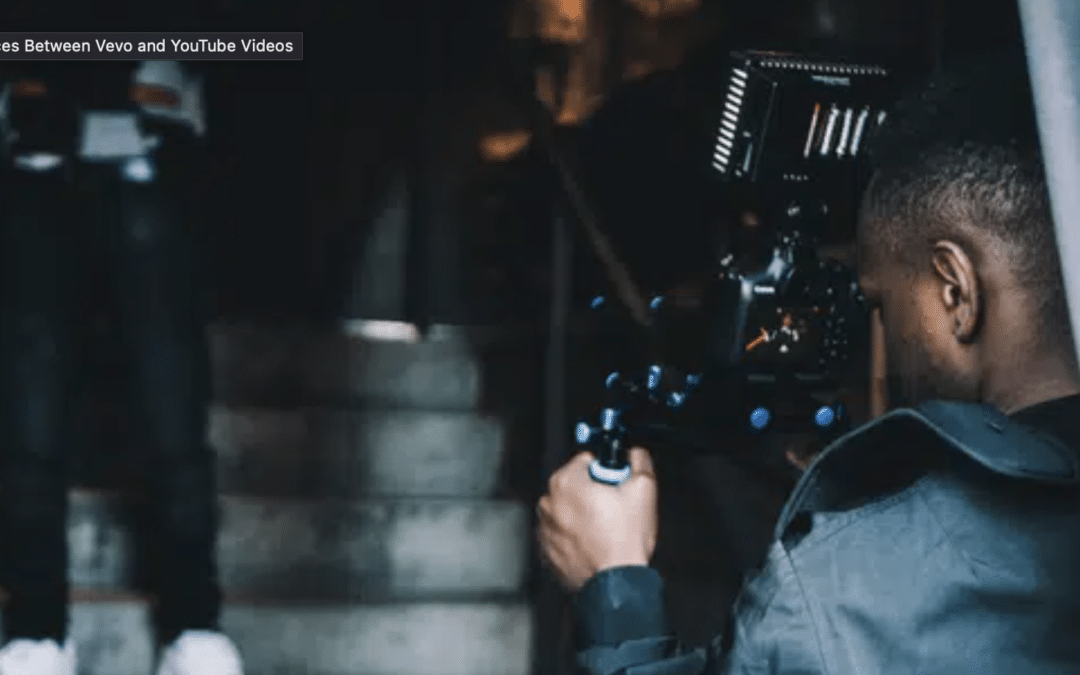
by Francesca | Feb 29, 2024 | Music Marketing
Planning to release a new music video? Congrats! Now it’s time to decide where to drop it. Both YouTube and Vevo offer many great benefits, but they’ve each got their own downsides. Before you release anything, here are some major differences between YouTube and Vevo to consider…
Differences Between Vevo and YouTube Videos
Before we dive in…
Even though your video is technically competing with a larger number of videos on YouTube, that doesn’t mean its capability for exposure is any less. By ensuring your channel and videos are optimized correctly, you can increase the visibility of your videos.
YouTube
1. Access to Creator Studio
- View, analyze and report your channel’s analytics.
- Manage and optimize your individual videos with tags, cards, end screens, etc.
- Set channel and video upload defaults.
2. Total ability to quickly and easily manage all parts of your channel at any time.
3. Ability to upload and take down videos quickly.
4. Livestream capabilities
5. Interaction with your YouTube fans through likes, comments and messages
6. No consideration for feature placement on Vevo.
7. Less likely for videos to go viral unless optimized correctly
Vevo
Vevo is the world’s leading all-premium music video and entertainment platform with over 23 billion monthly views globally. They deliver a personalized and expertly curated experience for audiences to explore and discover music videos, exclusive original programming and live performances from the artists they love on mobile, web and connected TV.
1. You cannot update your Vevo channel yourself, but you can have the below details updated through your distributor per request:
- Artist image
- Channel Banner
- Channel Trailer Video
- Channel Bio (found under “About” tab)
- Google Adwords Account linking
- Playlist Creation
- Video Description update
- Video thumbnail update
2. Vevo makes you look more “legit” as an artist, since mainstream artists also have Vevo channels like Billie Eilish, The Weeknd, Taylor Swift, Harry Styles, etc.
3. Vevo doesn’t guarantee more exposure, but has more potential to go viral, as Vevo videos tend to be surfaced more in searches due to their partnership with YouTube.
4. More likely to get your video featured in a well-exposed playlist, i.e. Vevo playlists.
5. Can be linked to your Official Artist Channel (OAC) so Vevo releases automatically show up on your OAC.
6. YouTube Premieres can be done with Vevo videos and are arranged through your distributor.
7. Vevo can set your personal channel as a Channel Moderator to the Vevo channel to manage comments on your Vevo videos.
8. Vevo also distributes music videos to Apple TV, Pluto TV, Samsung TV and Roku – just to name a few.
Can you release on both platforms?
Yes!
In fact, we recommend it. — Odds are your only content on your YouTube channel isn’t solely official content like music videos, live performances, track videos, or lyric videos (all of which that can be uploaded to your Vevo channel upon approval instead!). You can also upload to your personal channel videos like interviews, behind the scenes, teasers, fan contests, vlogs, etc.
If you decide you want to use your personal YouTube channel for all of these videos and then get a Vevo channel created to release more official content, you can easily get them linked together via an Official Artist Channel through your distributor.
- If you decide to do this though, please make sure you don’t upload the same video twice (once via a distributor to your Vevo channel, and a second upload to your personal channel) since doing so will cause two versions of the video to go live on YouTube – which divides views, confuses fans, and affects overall monetization opportunities.
Because of this, we recommend that you release your official music videos with a distributor to your Vevo channel, and then utilize your personal YouTube channel for interviews, behind the scenes, teasers, fan contests, vlogs, and/or whatever else that has made sense for your brand as an artist.
In Conclusion…
We hope that this article has given you some things to consider and gives you the direction you need to optimize your next video release.
Good luck!
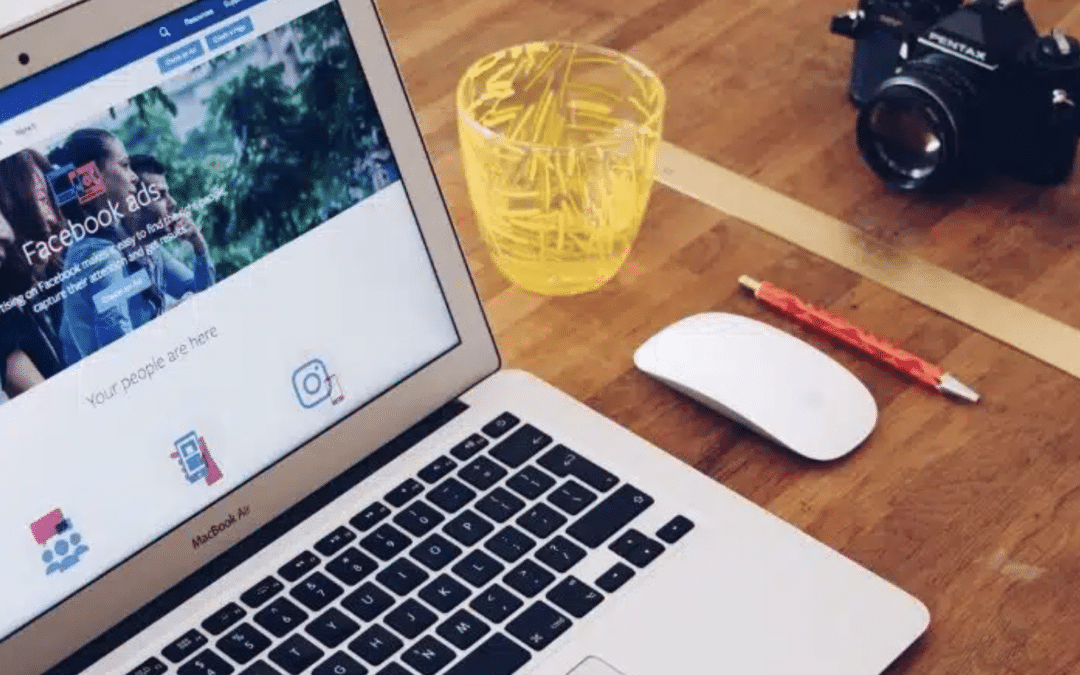
by Francesca | Feb 29, 2024 | Music Marketing
So you’ve finished creating your next big release, but maybe you’re not entirely sure how you want to spread the word… We’ve compiled a few suggestions to get those creative juices flowing in order to make your next release a great success.
How to Advertise Your Latest Release Online
Know Your Audience and Where They Are
You may think you know your fans more than anyone, but there are some great free tools available to you that may enlighten you a bit on some key locations and targeting options you might have overlooked. Facebook and Instagram insights are two of these valuable tools that can help you reign in on your most-active audience demographics, from age to location to time of engagement and more.
Another valuable tool is Spotify similar artists, located on your artist profile. These similar artists are suggested based on what fans of your music are also listening to on the platform. Utilize this data to help you grow your audience from similar artists. Lastly, focus the majority of your budget on your most-active audience, you’ll find that loyal fans will do a lot of advertising for you when provided the right information, the share button is only a click away.
Be Creative
Many advertising platforms require more than just your latest video or song in order to create an advertisement, it’s best to be creative when creating these assets. Think like your fans, how would they like to be told about your latest release or shown your latest video? Society has shifted to an instant gratification biome where you need to grab their attention in as little as 3 seconds before you’ve lost it. Always make sure you’re putting your strongest asset forward to get the best results from your investment.
Creativity doesn’t end with the assets, you can also be creative with the type of ads you use to present your message. An example is utilizing Facebook’s event response ads to create an ‘event’ for your new release date where you can drive traffic to this event page and provide them with information about your release, set up a watch/listening party, or even perform a Q&A.
Don’t Get Too Big for Your Britches
Don’t bite off more than you can chew. Many artists tend to think they need to cover all the advertising platforms and make sure their message is absolutely everywhere, regardless of having only a few hundred bucks to make that possible. Find your top 3 (socials & dsps) and streamline your focus there. You want to make sure you’re advertising in the locations where the bulk of your fans are, not everywhere and anywhere your fans might be (unless you have the budget to do so). If you’re rolling in cash, however, unleash the beast!
Watch it Like a Hawk
Advertising isn’t like the Ronco Rotisserie, you can’t just set it and forget it. You want to make sure once your ads go live, you keep an eye on the spending, adjust your ad scheduling, add/remove targeting from your audience, etc. – all to help improve your results. The last thing you want to do is spend your full budget only to realize after the fact that it was a wasted effort because you didn’t effectively optimize your ads accordingly throughout the life of the campaign.
Build Upon Your Foundation
Once you’ve got a few campaigns under your belt, don’t let that data go to waste. Utilize the converting users in new audiences for future ads, create re-marketing lists from engagements and share new information in past event pages.
We know this all can be overwhelming, but once you get a hang of it, you’ll wonder why you haven’t been doing this sooner. Remember, we have a dedicated team here at Streaming Promotions to help you out if you ever hit a wall or feel you’ve bitten off more than you can chew.
Good luck!
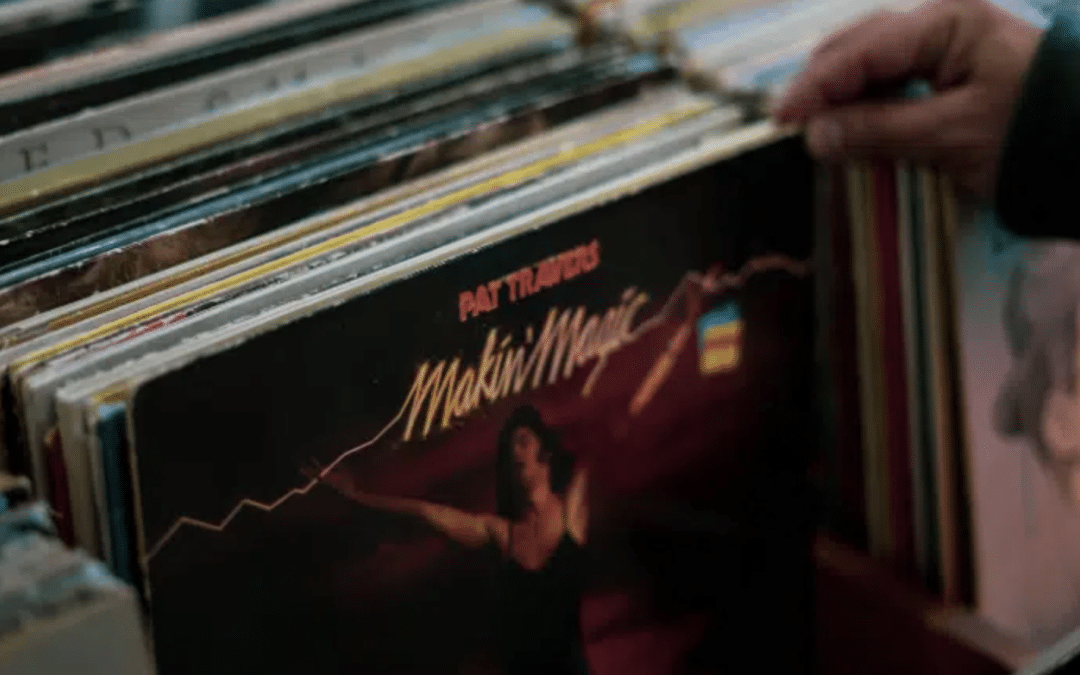
by Francesca | Feb 21, 2024 | Legal
Interested in starting your own label? There are a couple things you’ll have to do first to make it happen. In this post, we’ll give you a general rundown of the most important steps. Here’s what we know…
How To Register Your Own Record Label
What does a label do?
A record label is the entity responsible for releasing your master recordings to the public on retailers, streaming services, radio, etc.. Major parts of a record label’s work involve promotion, marketing your music, landing sync placements, and more. In addition, major labels often pay out advances to cover the recording costs for the album or single in addition to paying to produce physical releases like CDs or LPs.
“How do I know if I’m ready to start my own label?”
There are a couple reasons why someone would want to start their own record label. Whether you want to represent yourself or other artists, it’s a great way to gain some independence, learn more about the industry, direct the futures of other artists and genres, and give yourself the ultimate control over the destiny of your own music.
Regardless of why you want one, however, this is a complicated and time-consuming process that shouldn’t be taken lightly. Doing this on your own is possible, but not recommended if you have no experience in the game. Everyone has their strengths and weaknesses, so build a team that encompasses every skill you need to do this right. Once your team is in order, here’s what you need to do.
Define Your Vision
Your brand identity as a label will play a huge part in your success moving forward. It’s important to choose a specific vibe or genre you’d like to encompass as a label in order to solidify your brand identity in the industry. If you plan on taking on other artists under your wing, they’ll want someone who specializes in their specific genre and gets their vision.
In addition to deciding what genre (or genres) to focus on, this is the time to choose a label name that best represents you, get your official website set up, and trademark your label name. — Before you release anything, you MUST create your website and claim ALL social media pages for your brand prior to releasing your first album. Having your social media in order first gives it time to gain some traction before it’s time to promote you (or your clients) music.
Choose a Business Structure and Register with the State
Next, it’s time to decide on a business structure. Common options include sole proprietorship, partnership, limited liability company (LLC), or corporation. Each structure has its own advantages and disadvantages, so it’s not a bad idea to consult with a lawyer or accountant to figure out the best choice for you.
- For example, an LLC exists separately from its members, which means that those members are not personally responsible for any business debts and liabilities that may arise down the line. Instead, the LLC is responsible. On the other hand, a sole proprietorship is an unincorporated business owned and run by one person.
Choosing to go the sole proprietorship route gives you more personal control over everything, but an LLC saves you some liability if things don’t work out. These are just some general things to consider, but it’s up to you to thoroughly do your research and choose the right path for you.
Once you have made your choice, you will also need to register with the Secretary of State and update that registration annually.
Register with SoundExchange & Neighboring Rights Collection Societies
The royalties that SoundExchange collects and distributes are for the featured artist and the sound recording copyright owner. ASCAP, BMI and SESAC collect and distribute royalties for the songwriter, composer and publisher. — The difference is both satellite radio providers and webcasters pay SoundExchange when they stream music.
That means the only way to get that money is with SoundExchange.
They’re the ones who collect these digital performance rights from non-interactive music streaming on internet sources like SiriusXM and Pandora. If you don’t want to miss out on this money, Symphonic can collect SoundExchange royalties on behalf of sound recording owners and/or rightsholders.
Set Up Distribution Channels
Now, it’s time to get your (or your clients) music onto streaming platforms and DSPs like Spotify, Apple Music, Tidal, etc. To do this, you’ll have to go through a distributor like us. When you sign up for music distribution with Symphonic, we go to work to make sure your releases make the biggest impact possible on as many platforms as possible.
In Conclusion…
Creating your own record label can be an exciting and fulfilling venture, allowing you to discover and promote talented artists while leaving your own mark on the music industry. Although the process of registering a record label can seem daunting and complex, we hope these general steps will help the process go as smoothly as possible. With consistency, determination, and a passion for great music, there’s nothing you can’t do!

